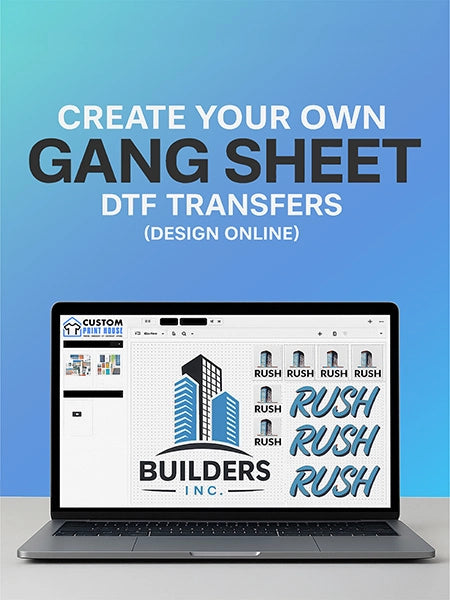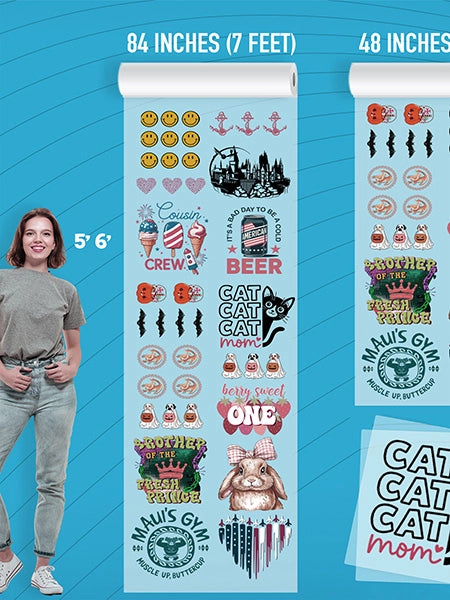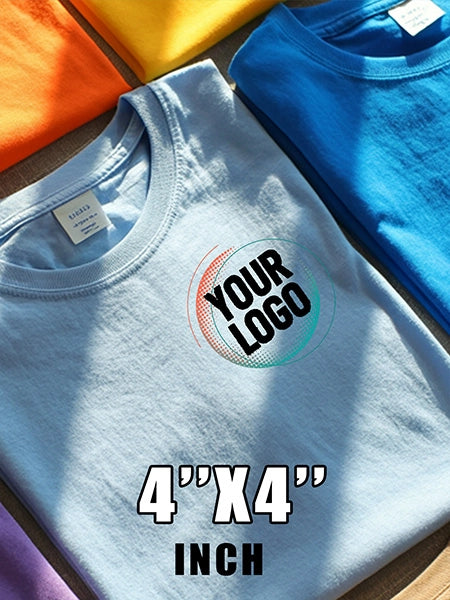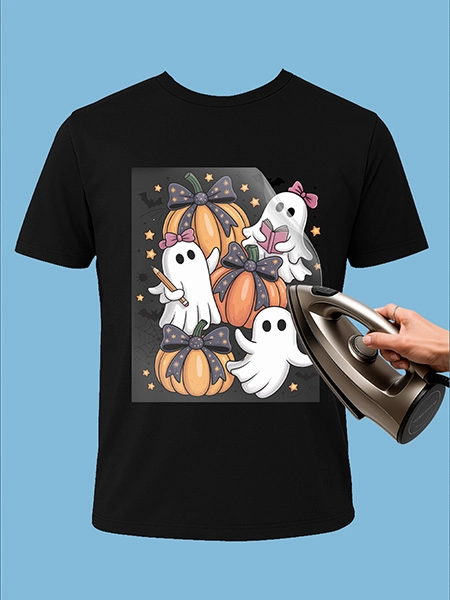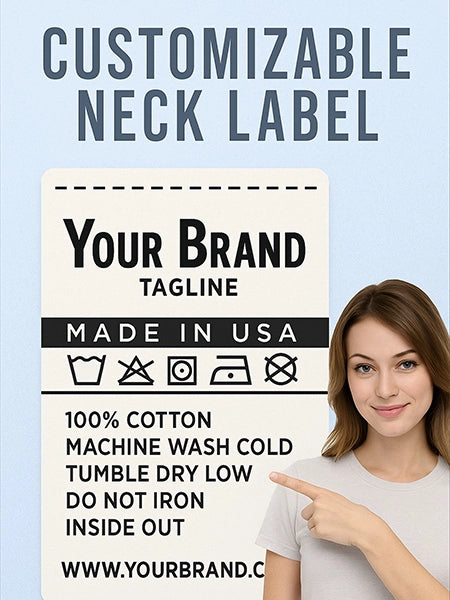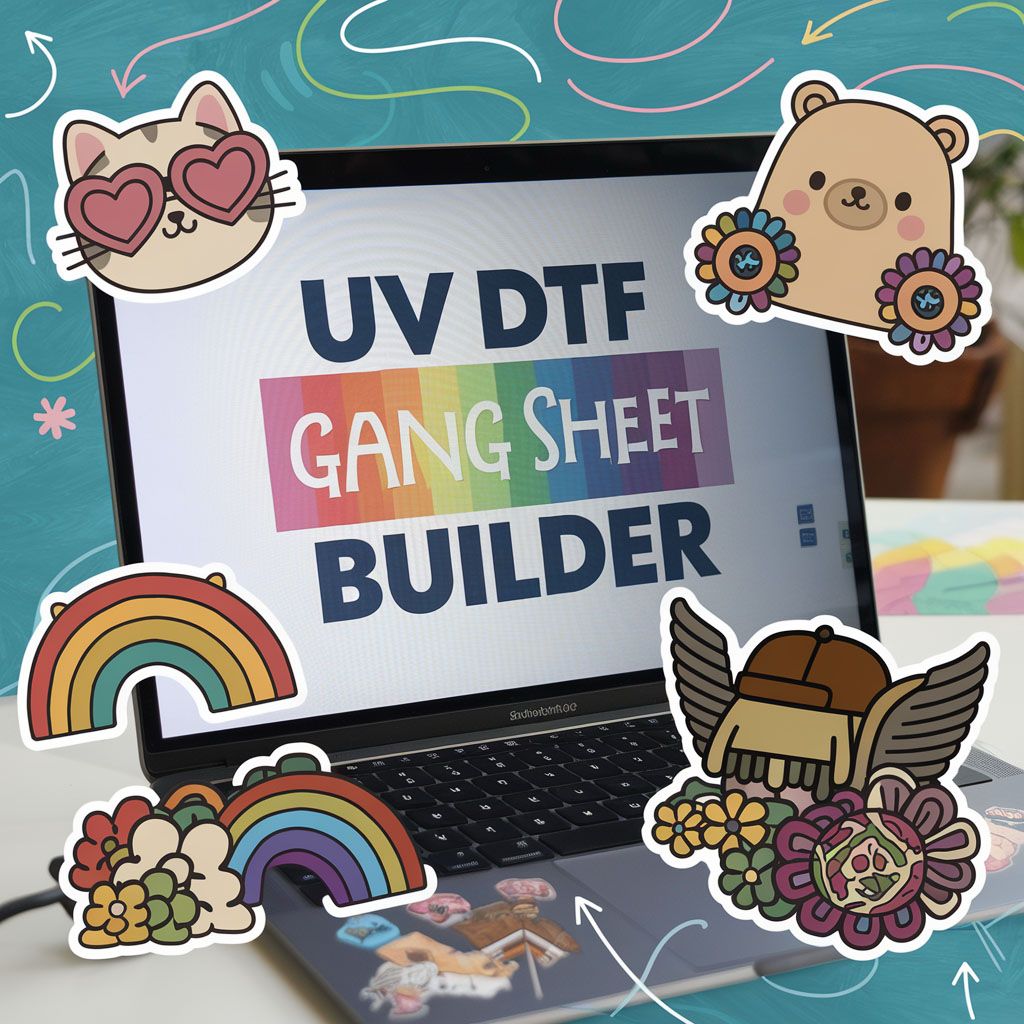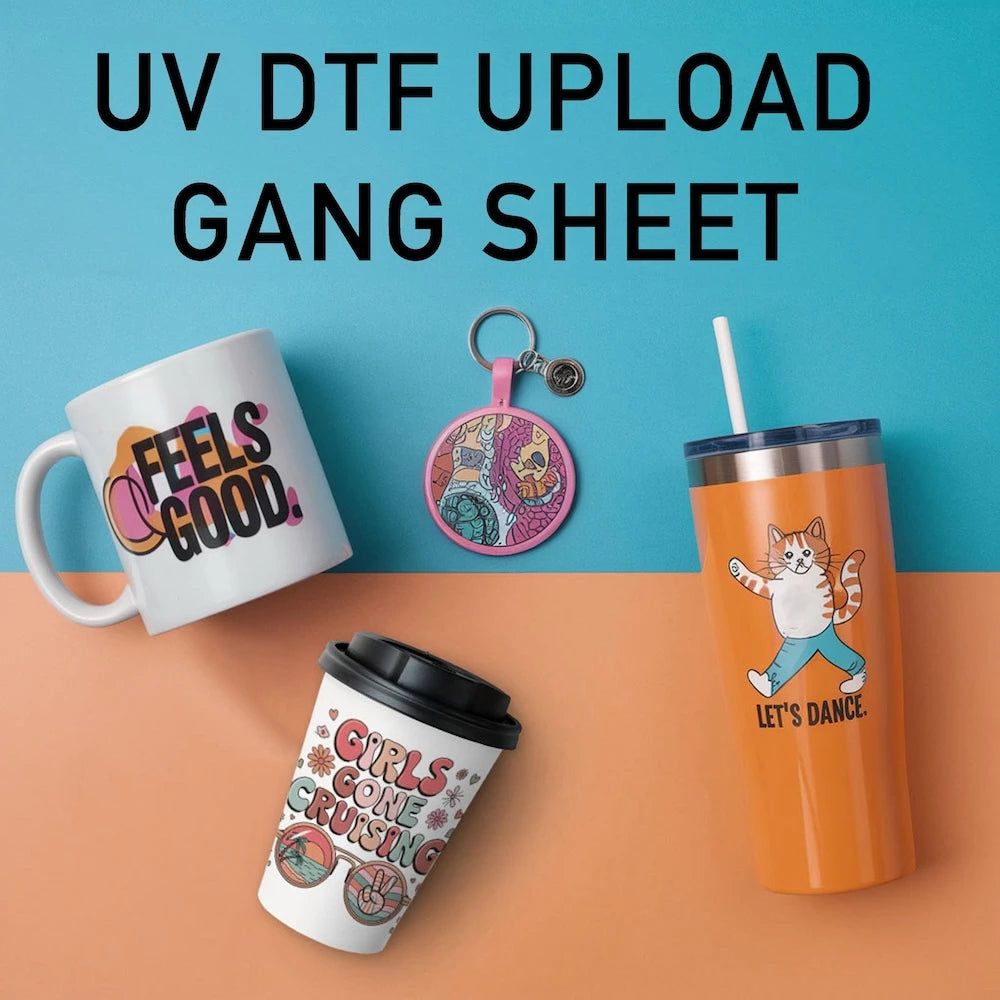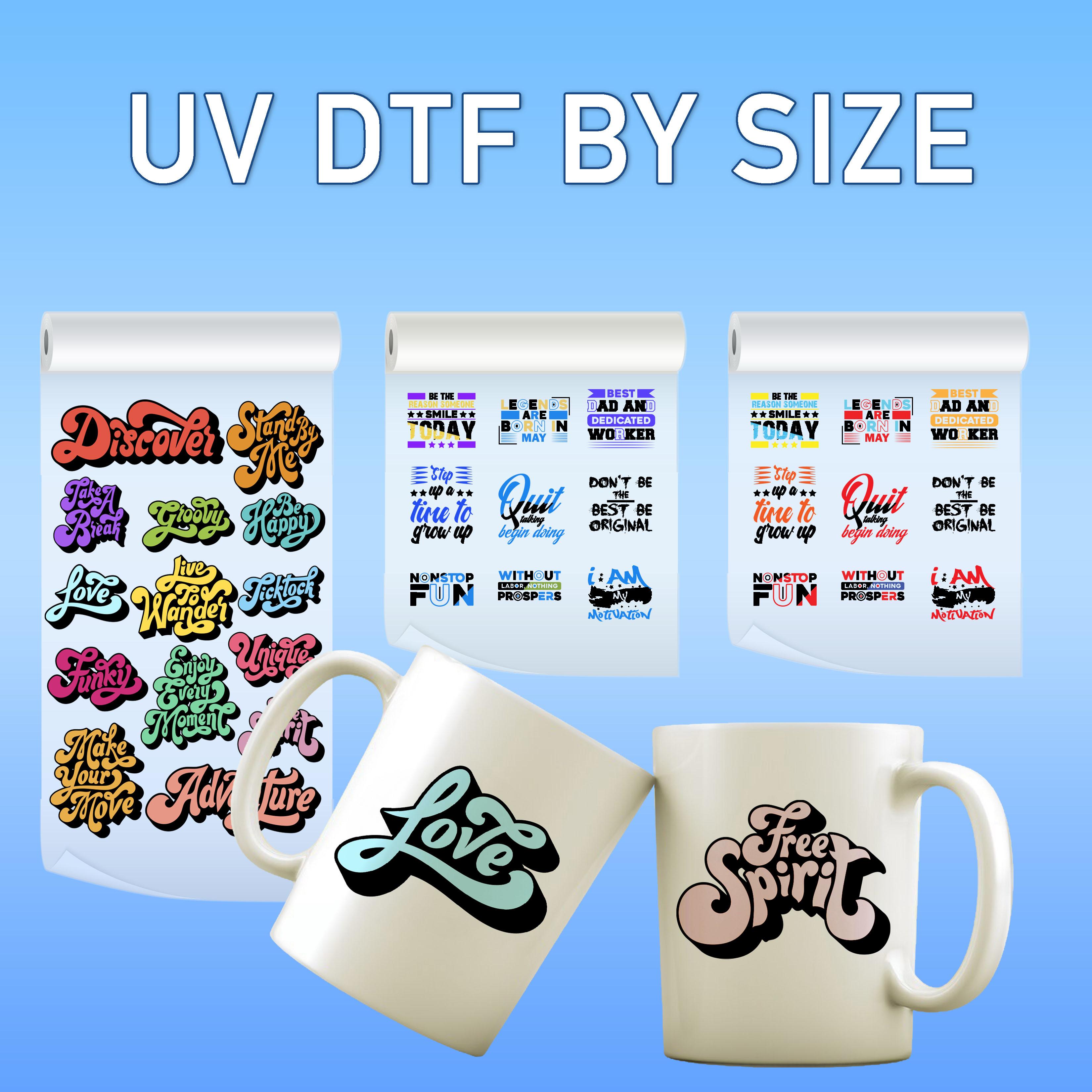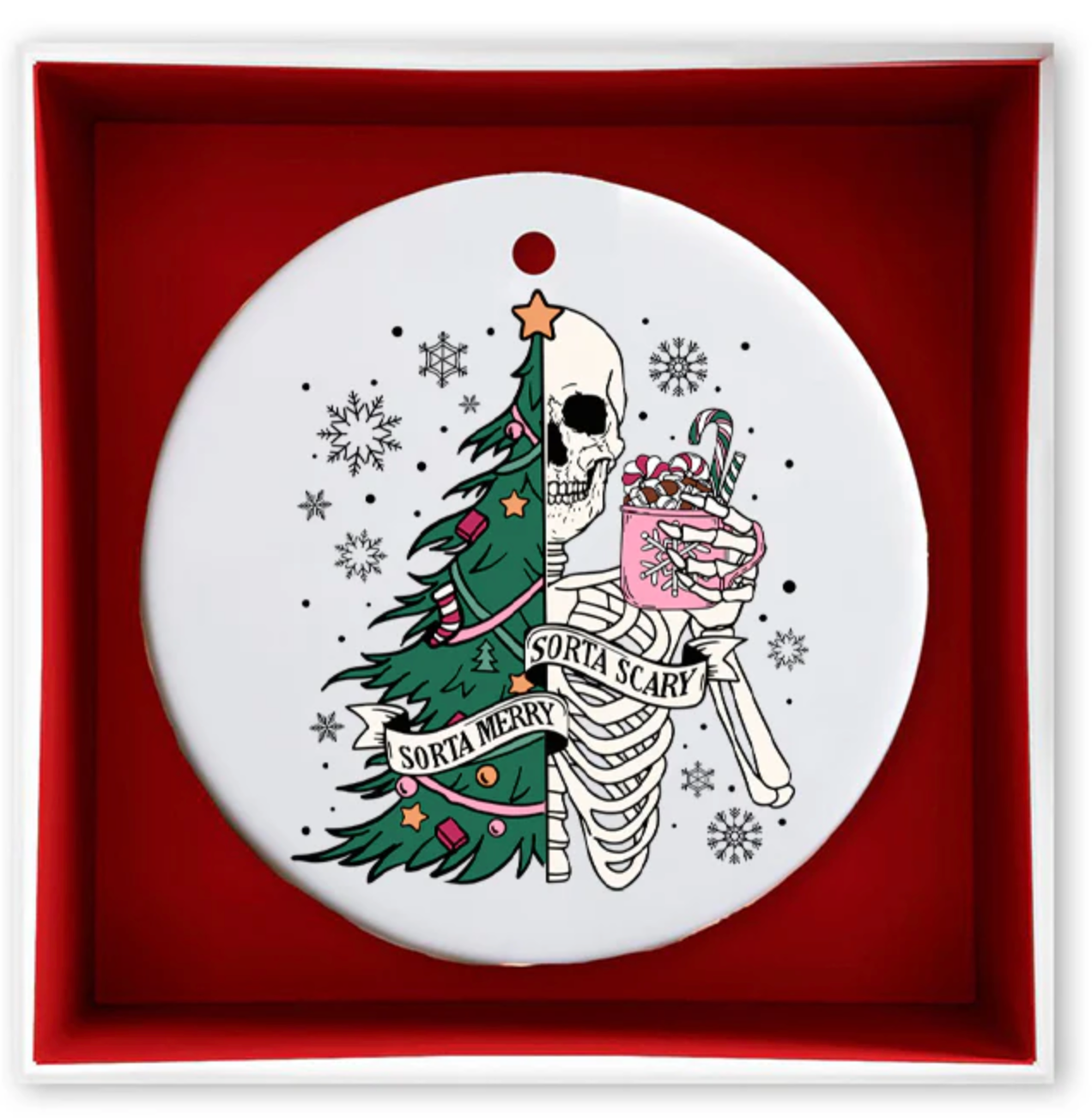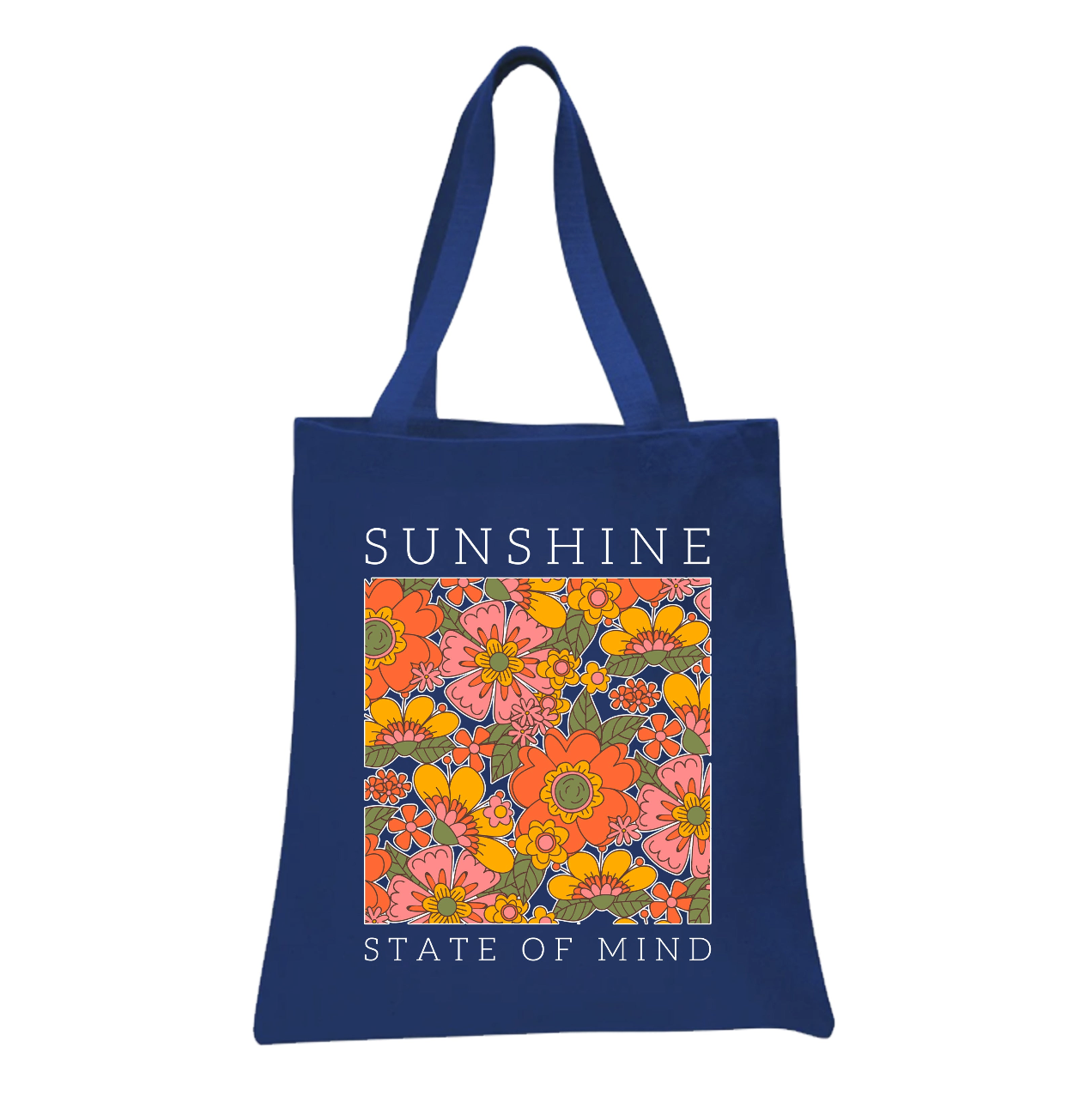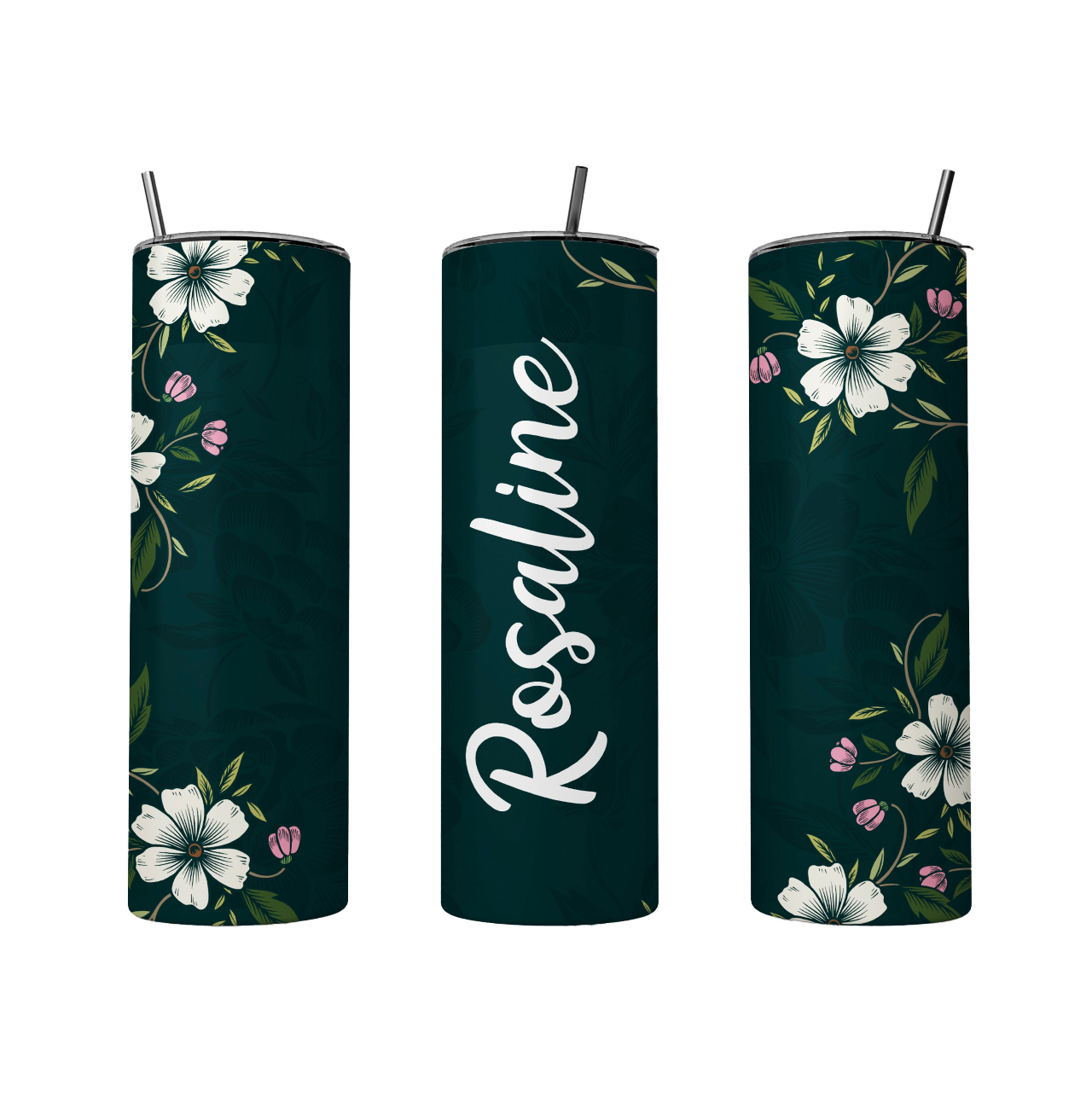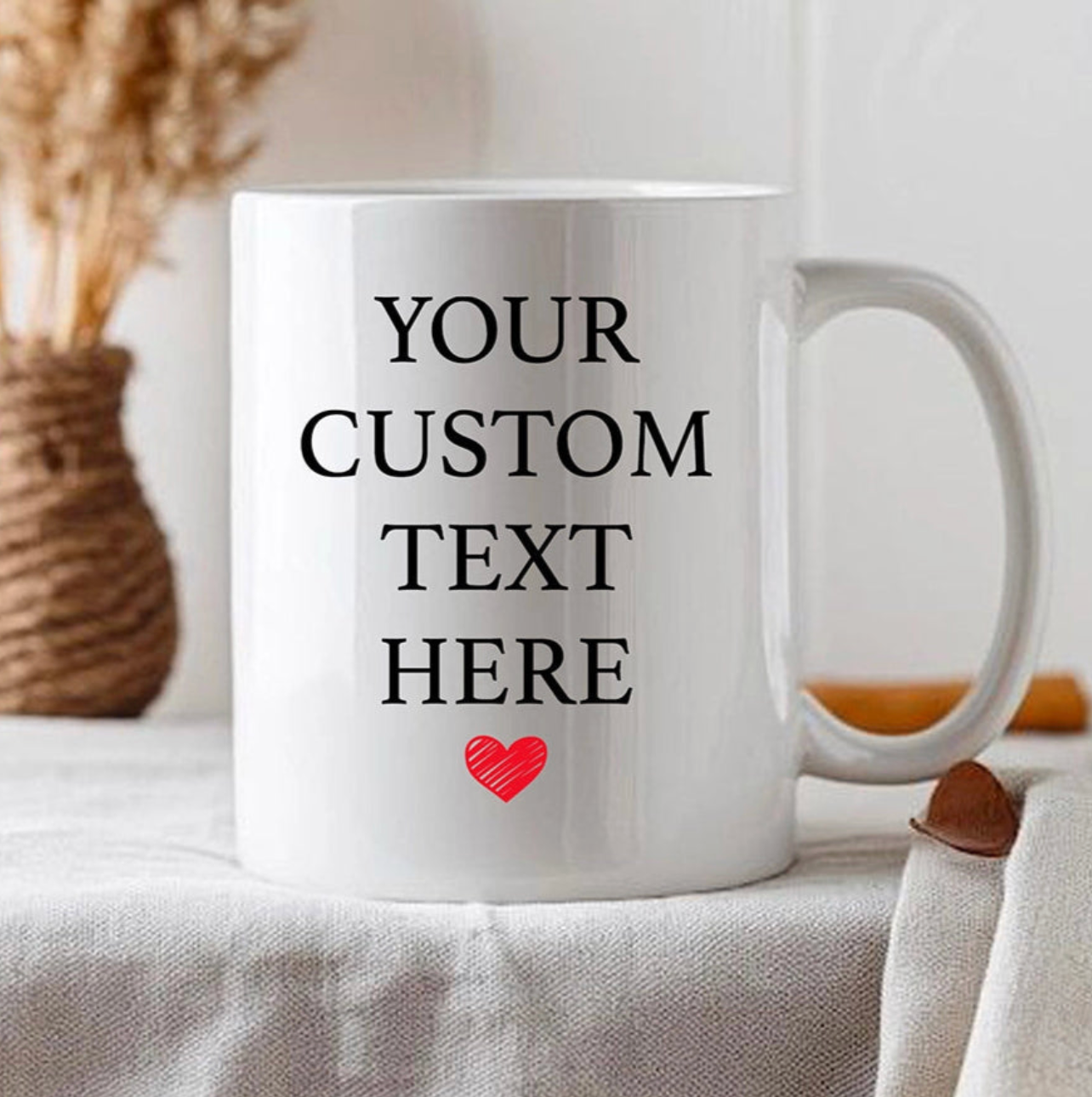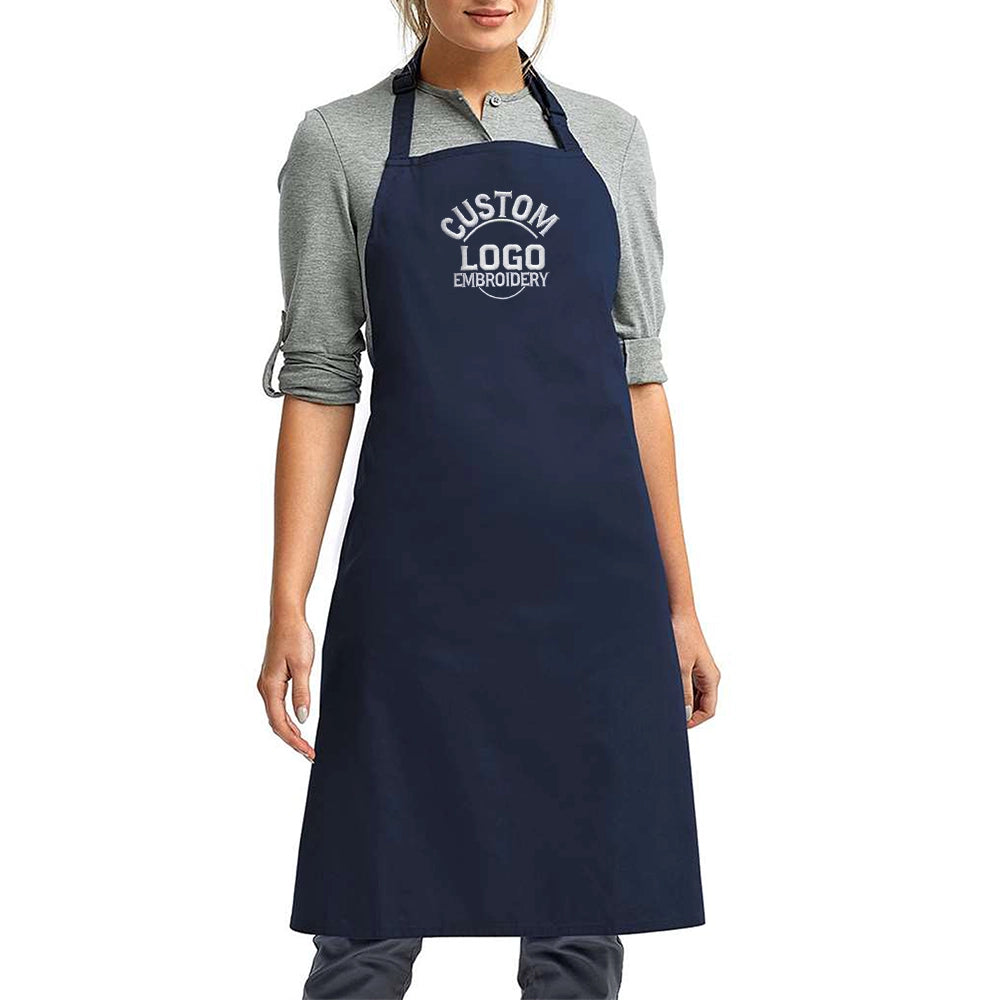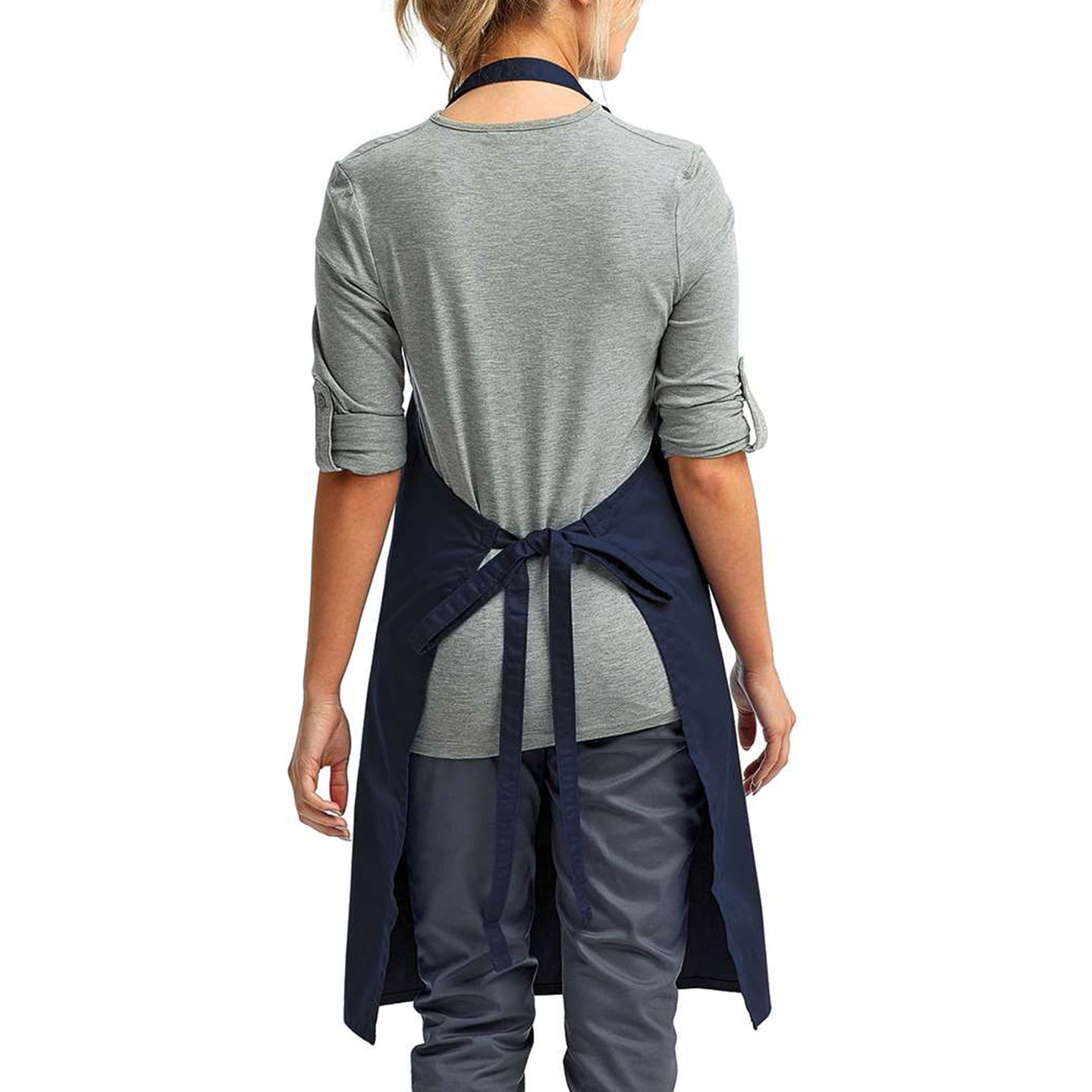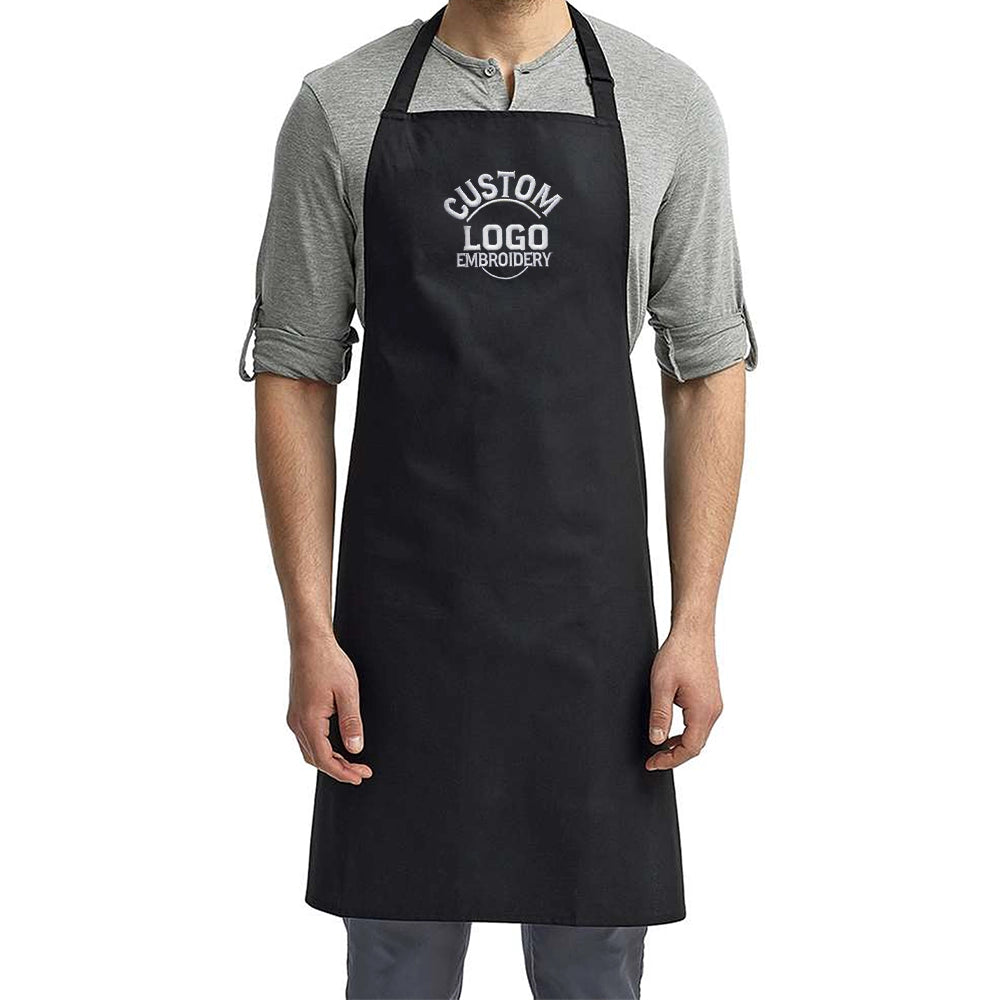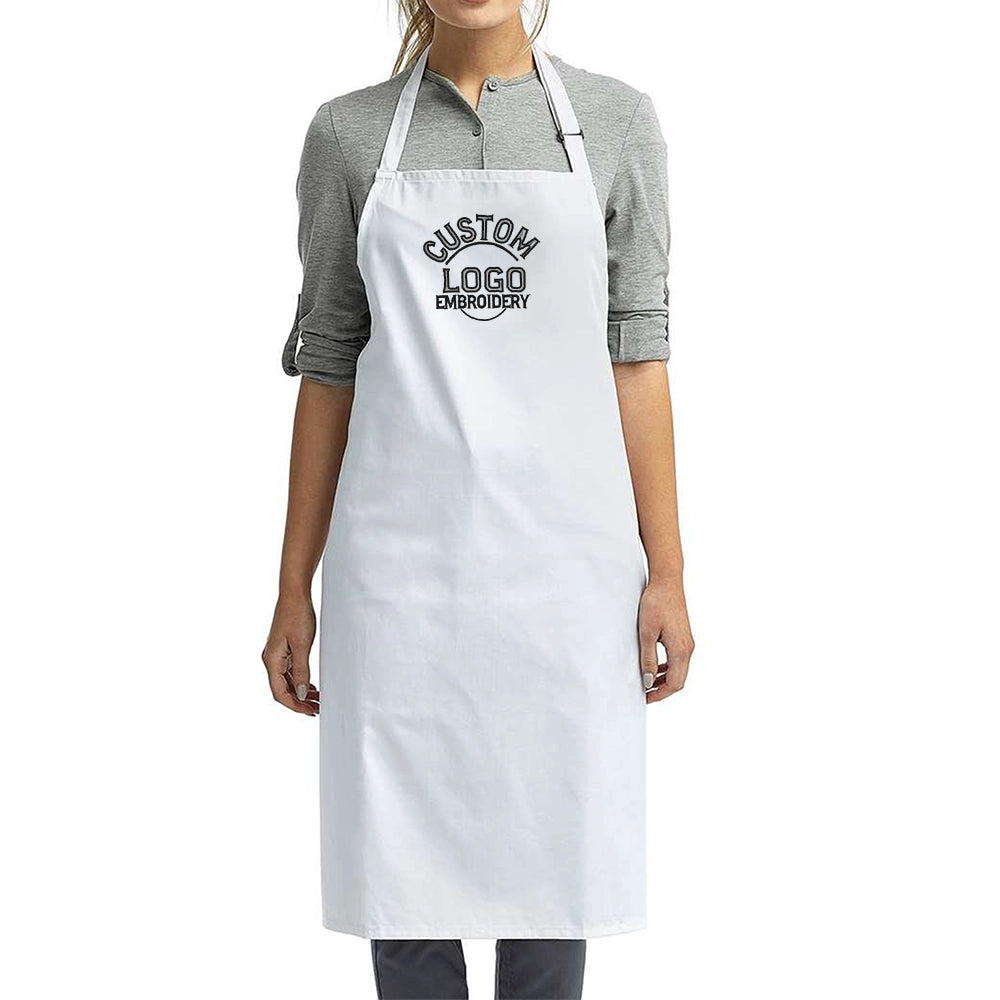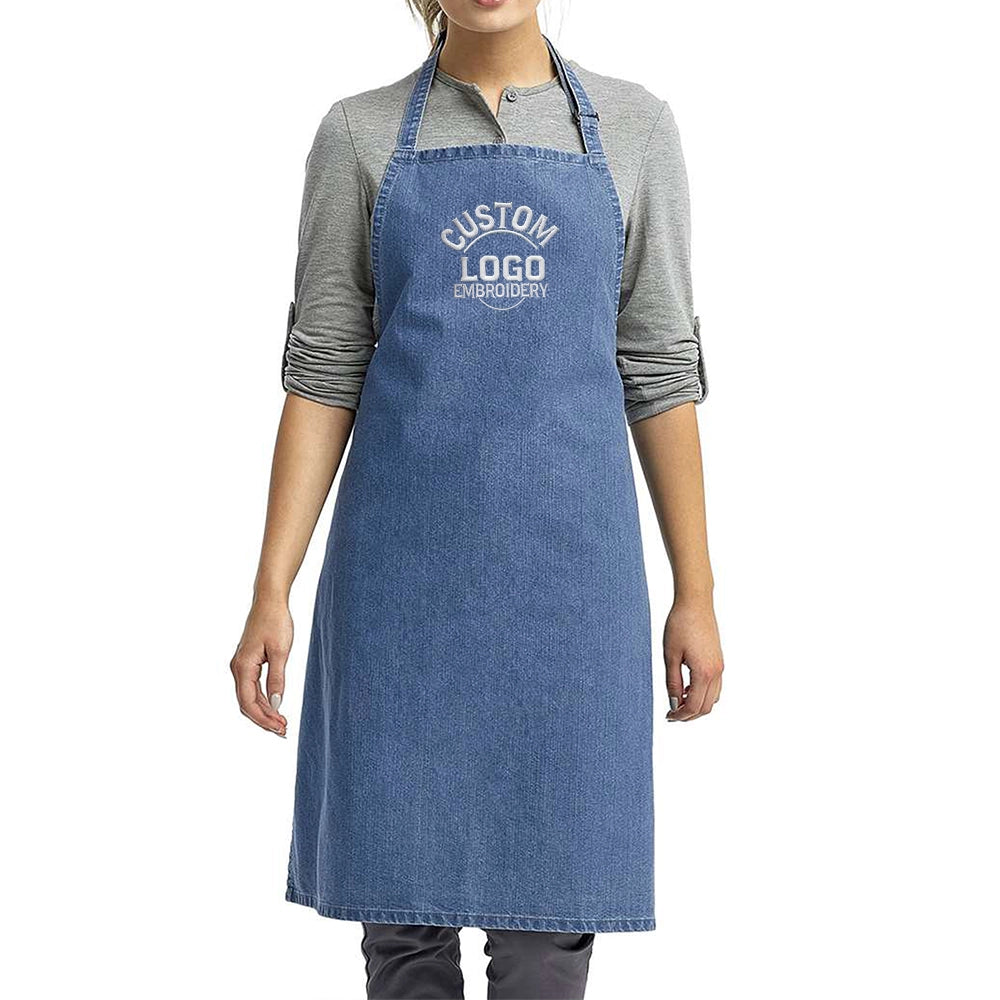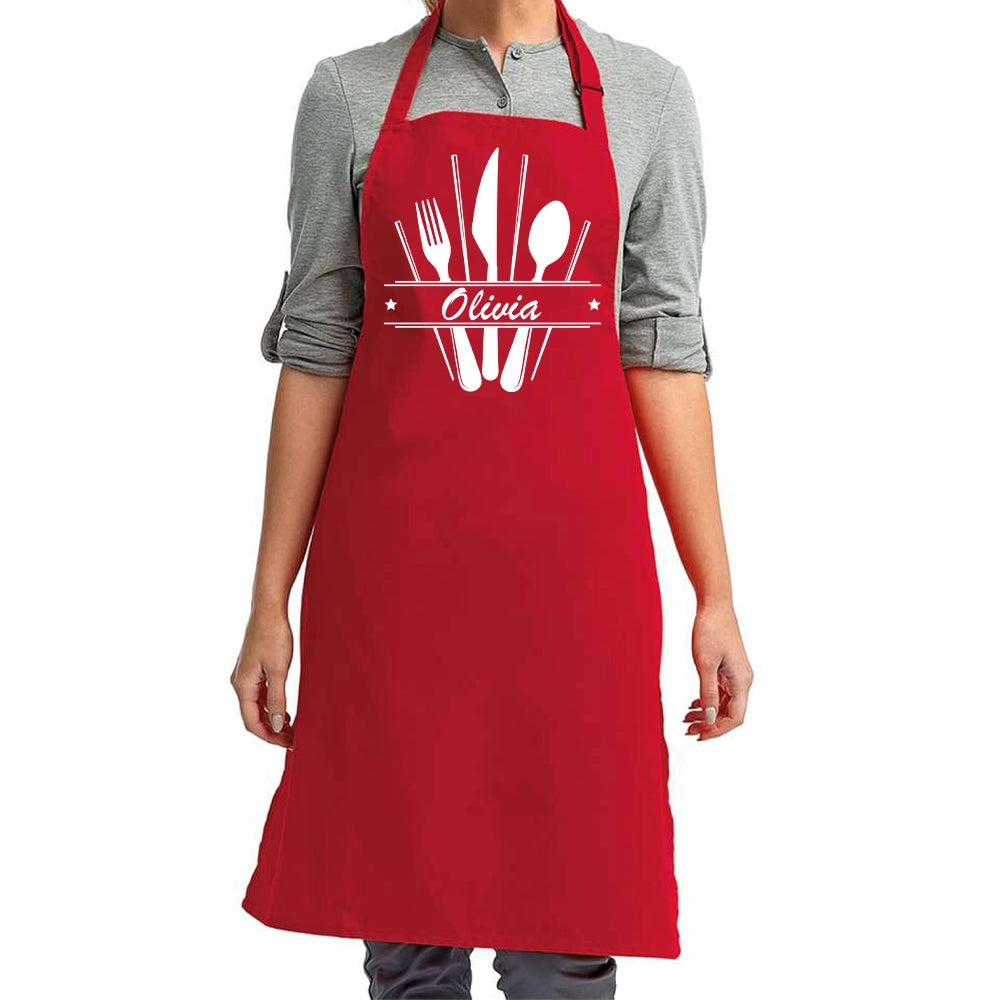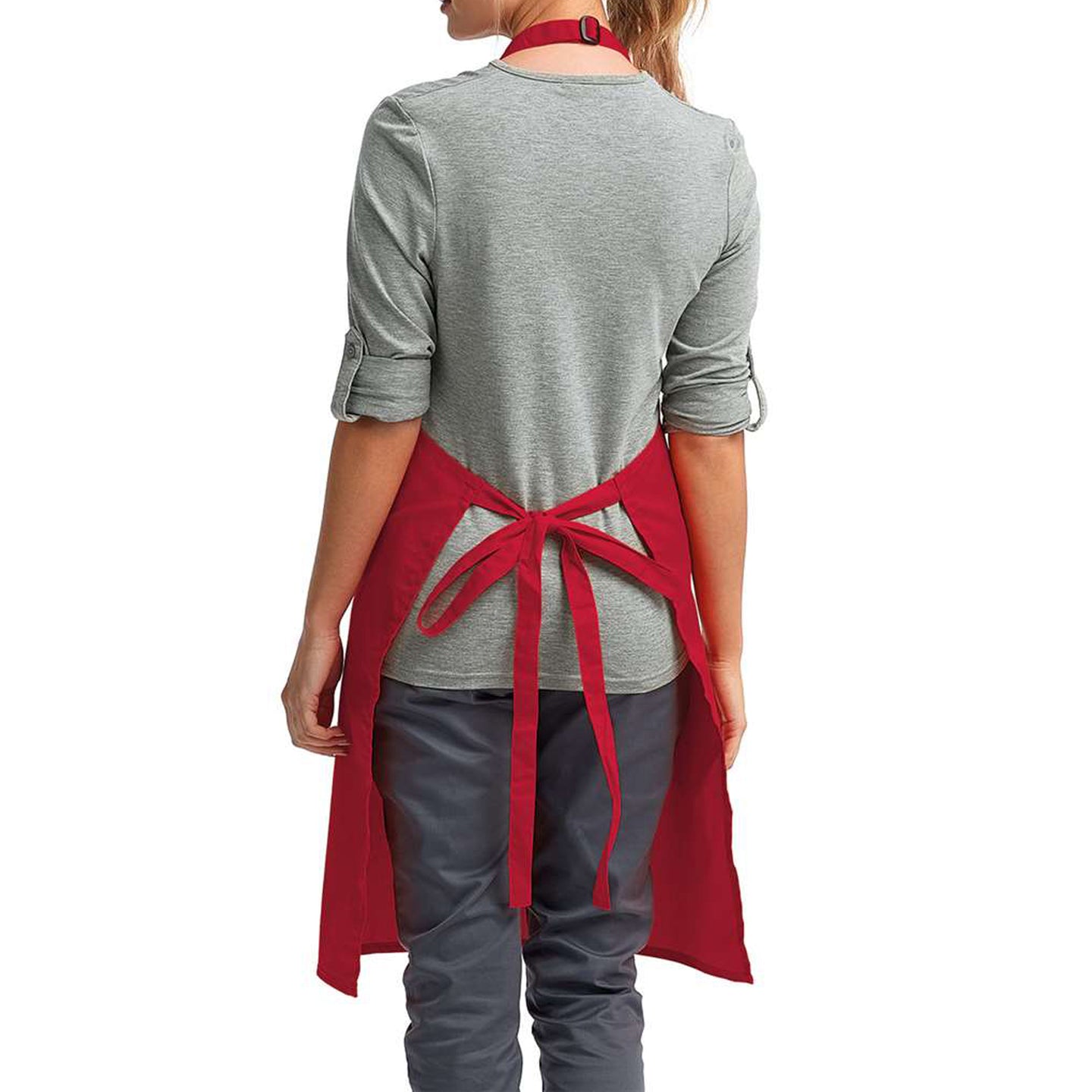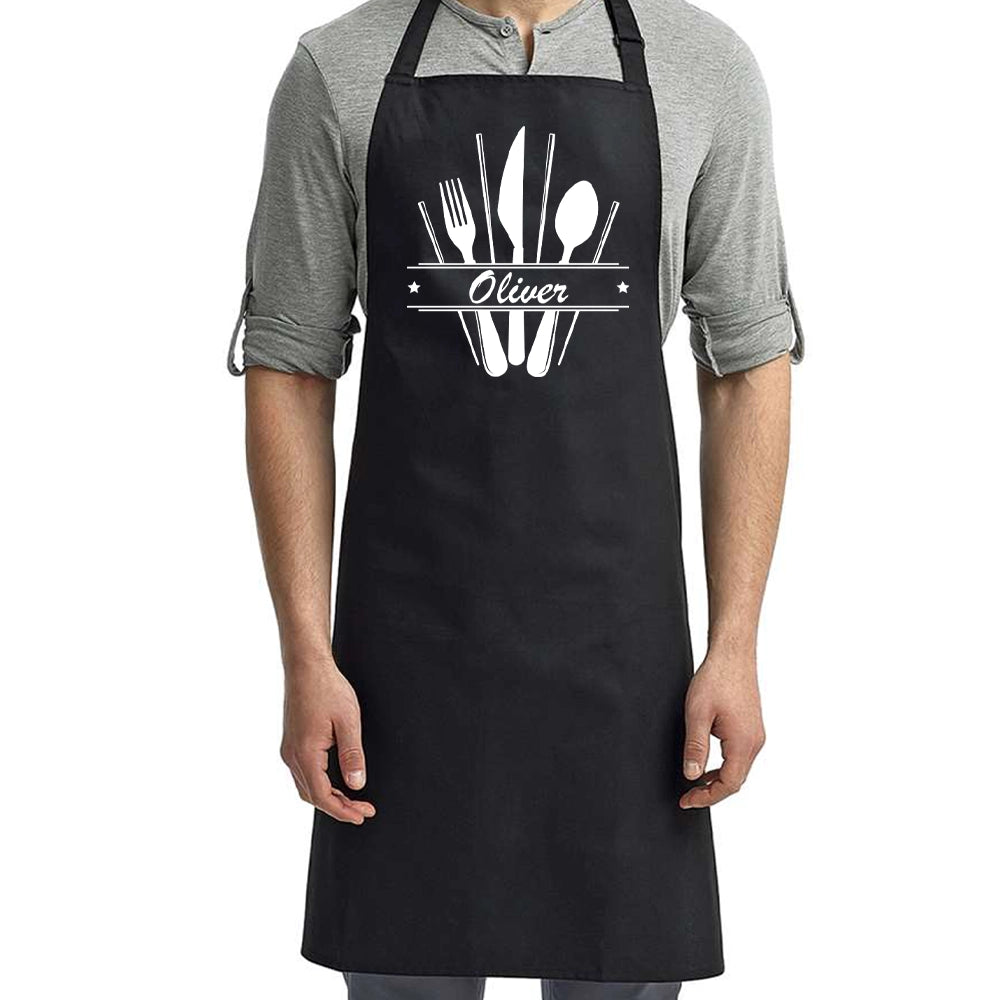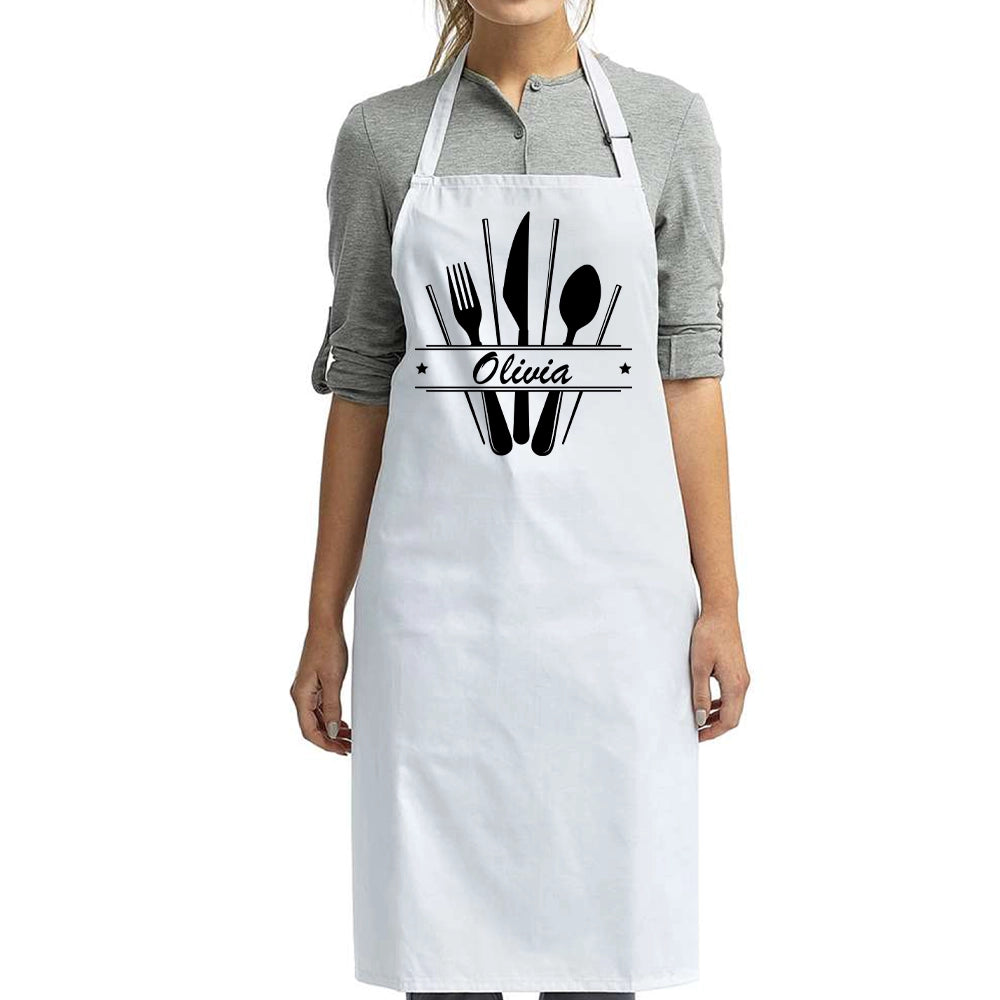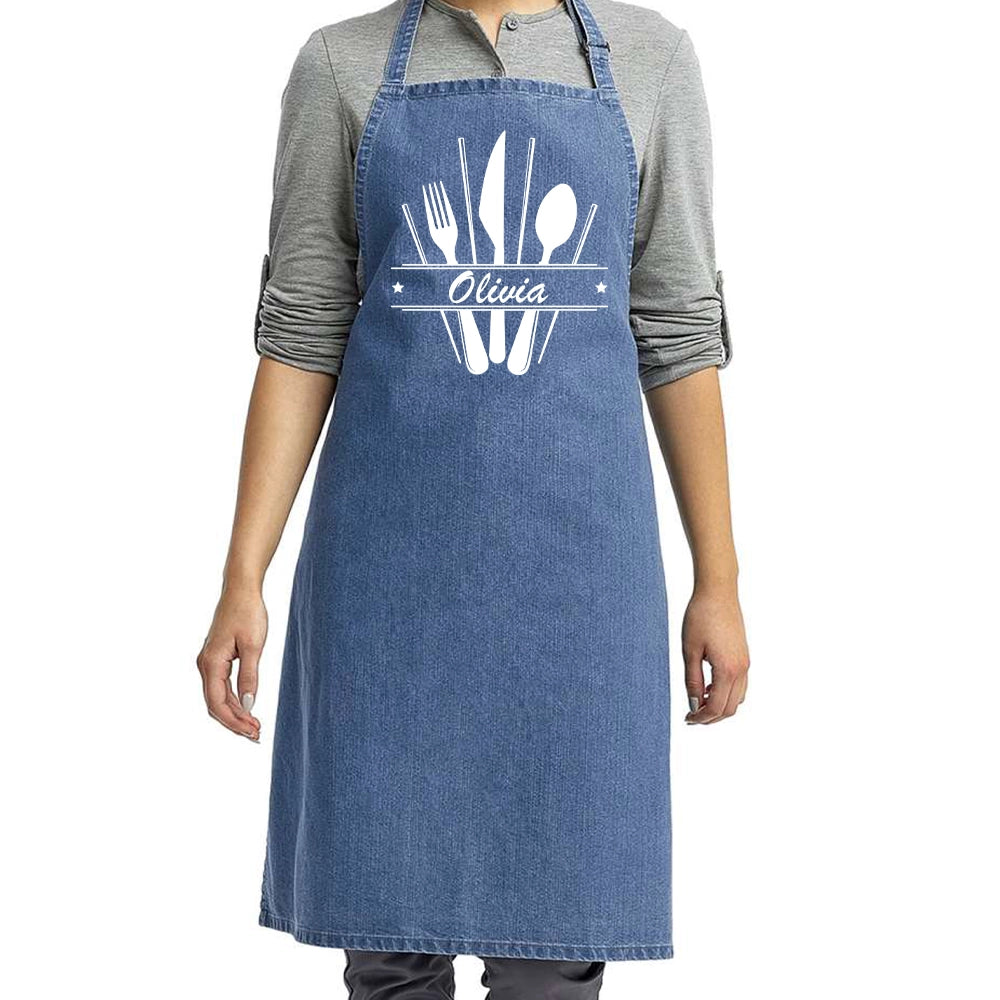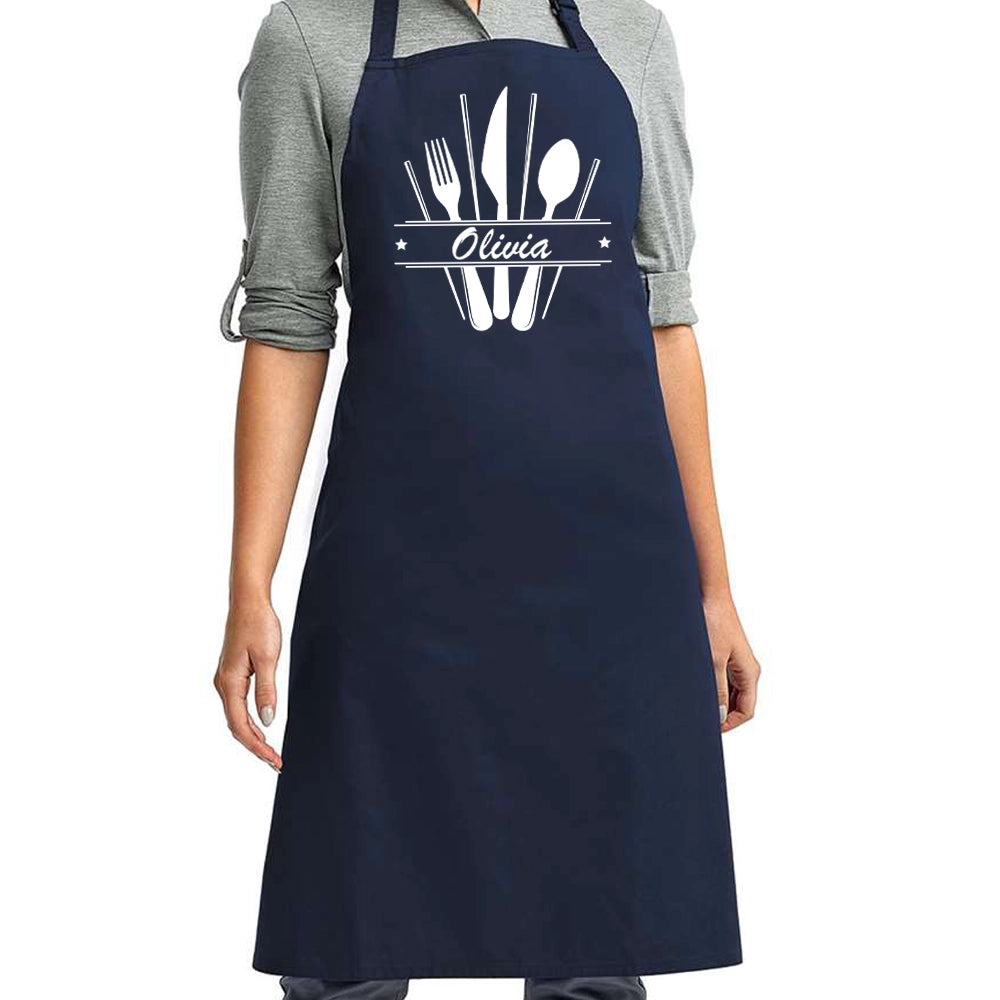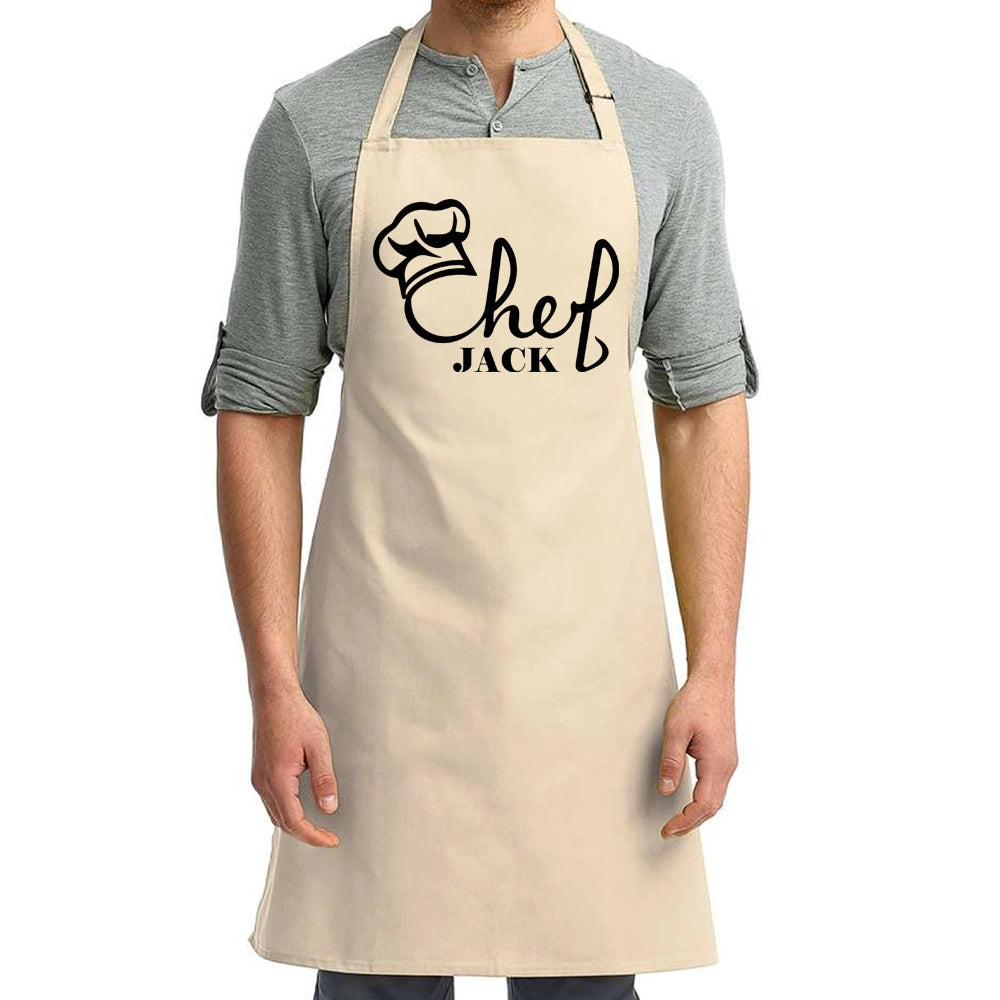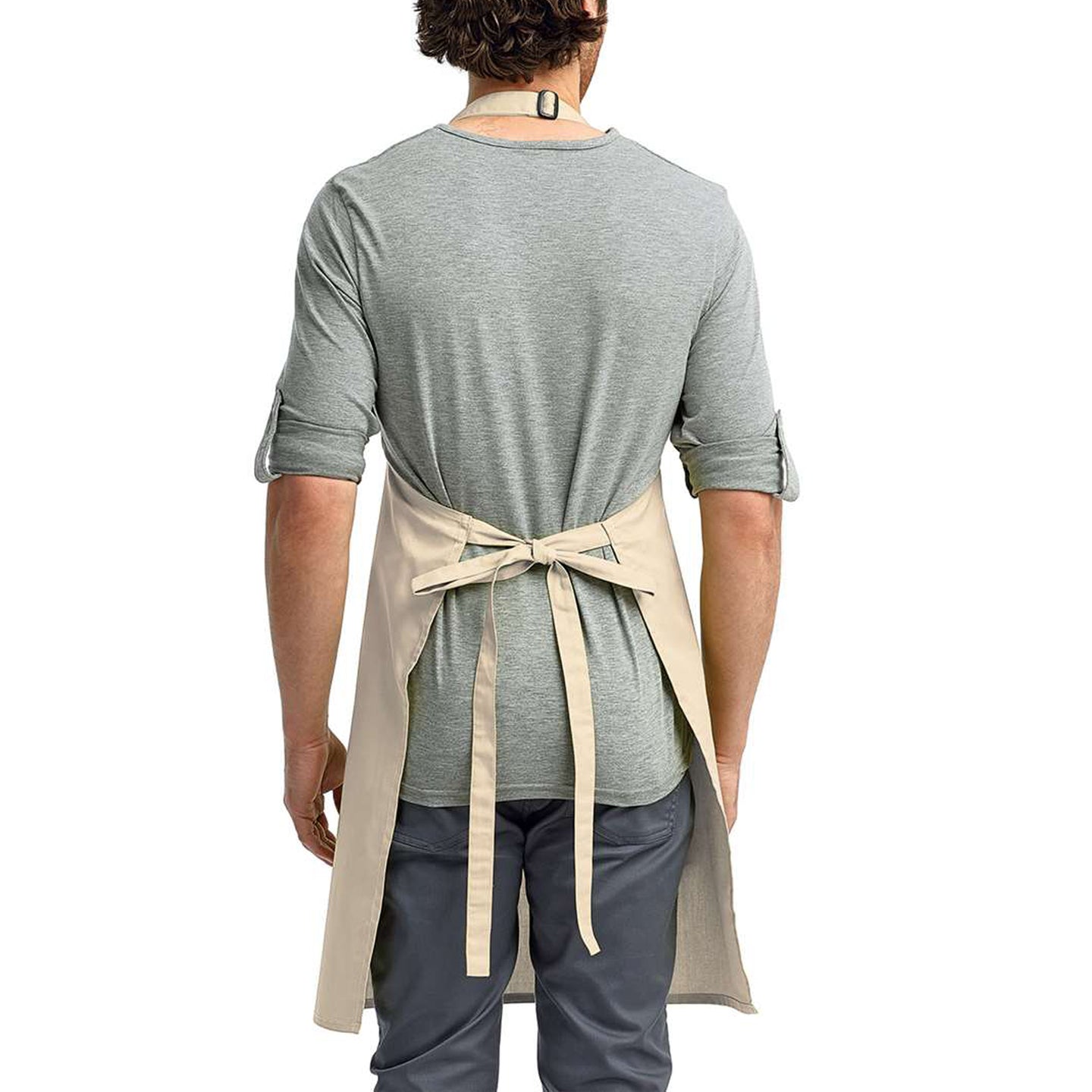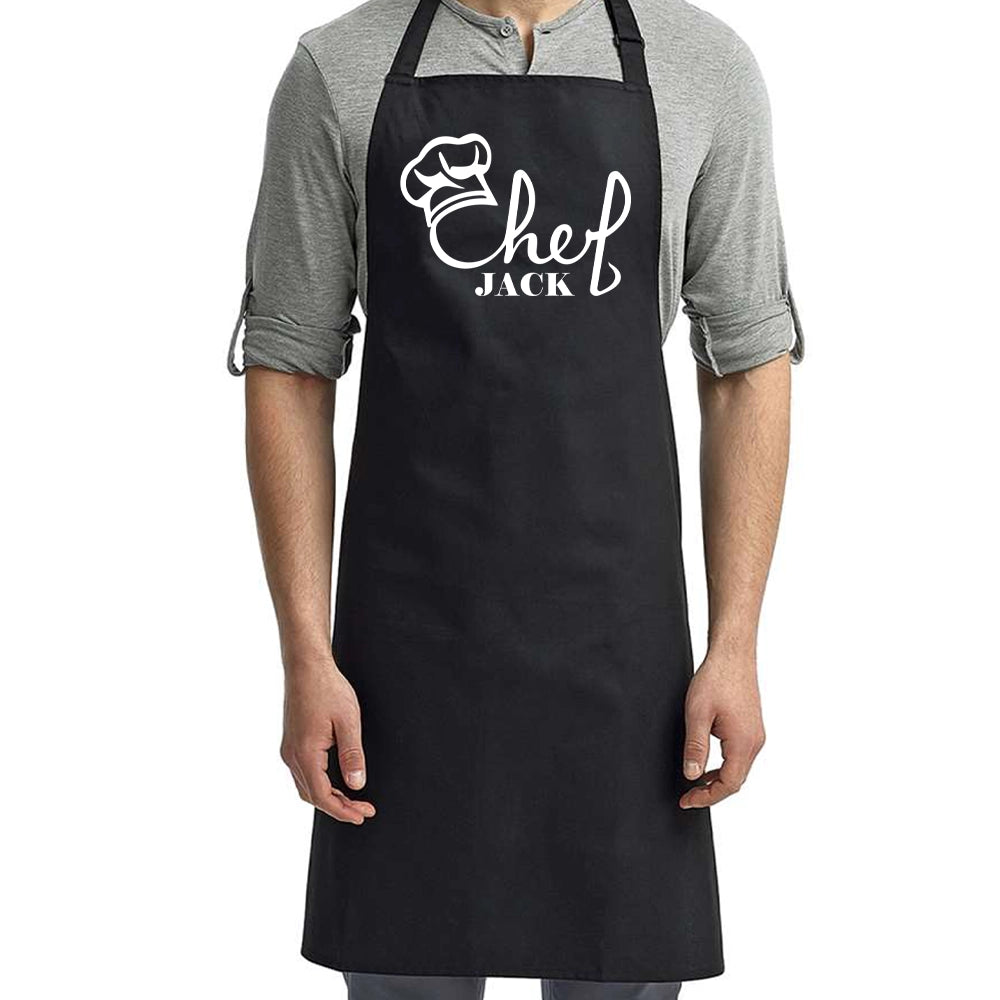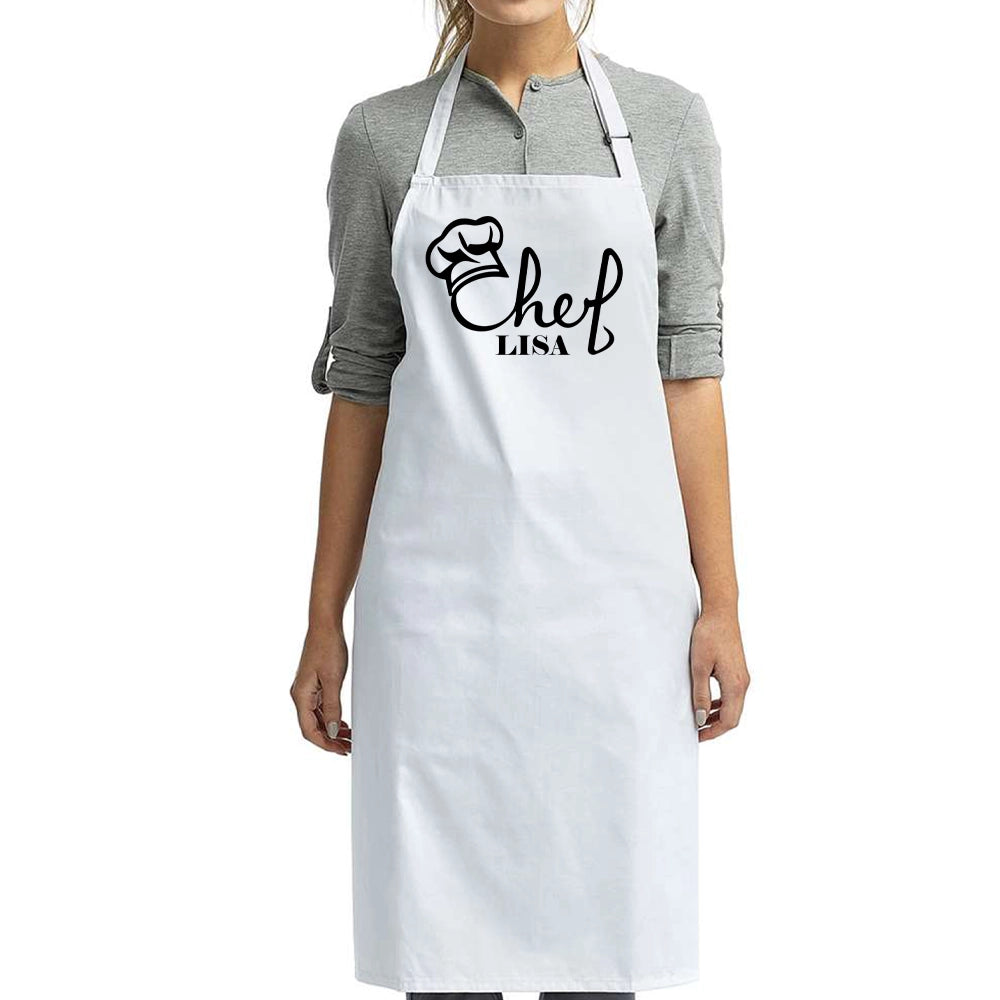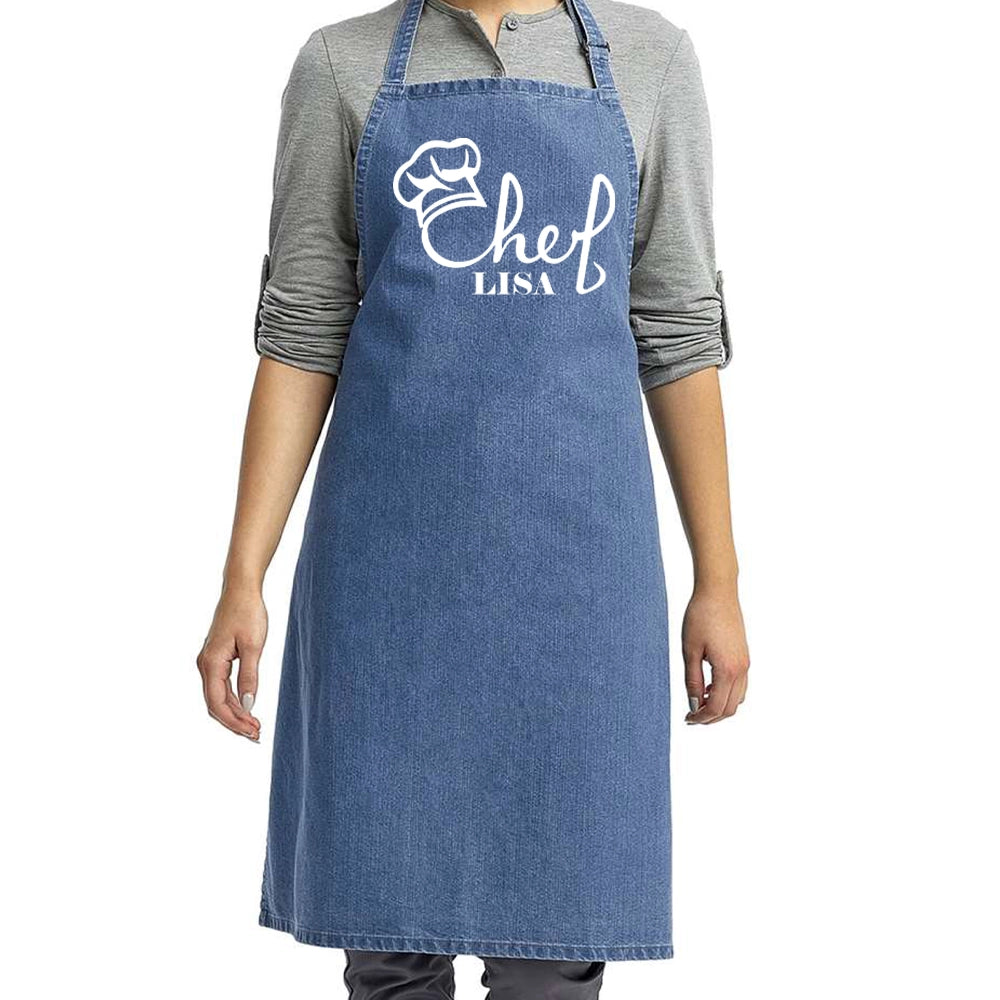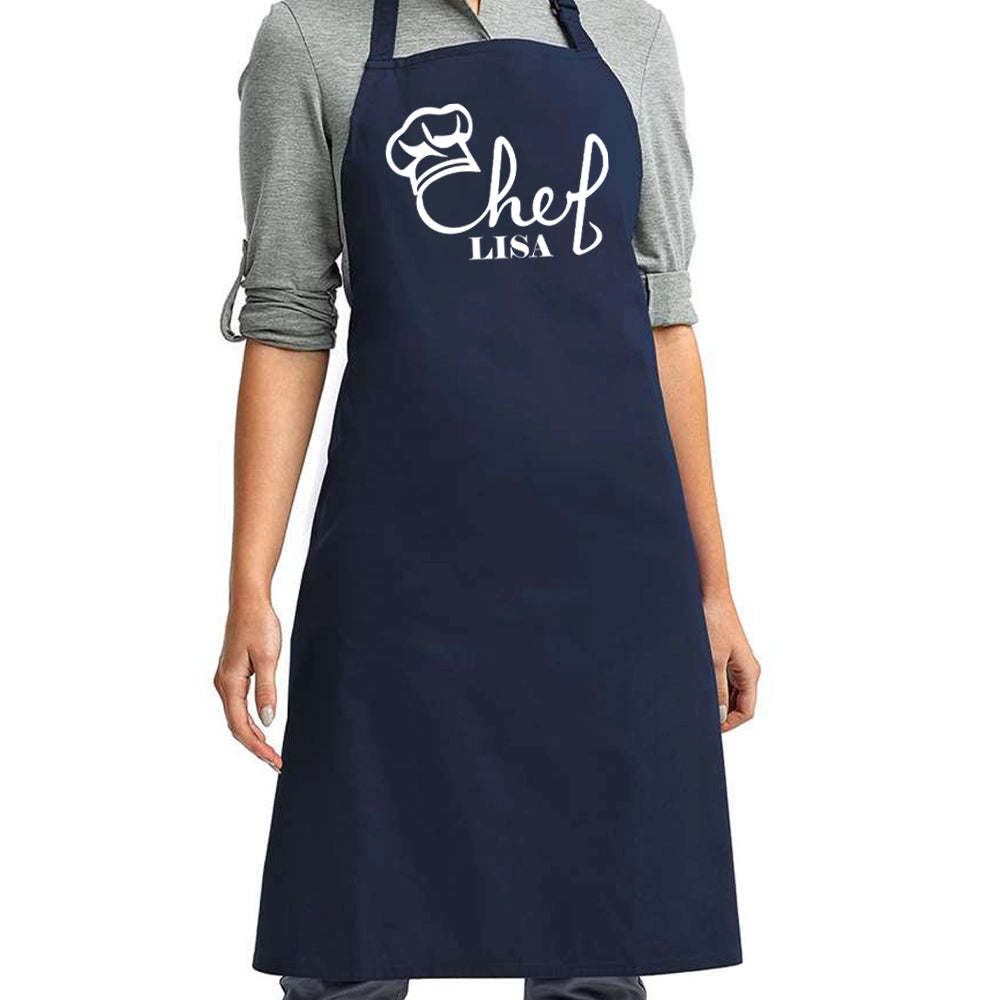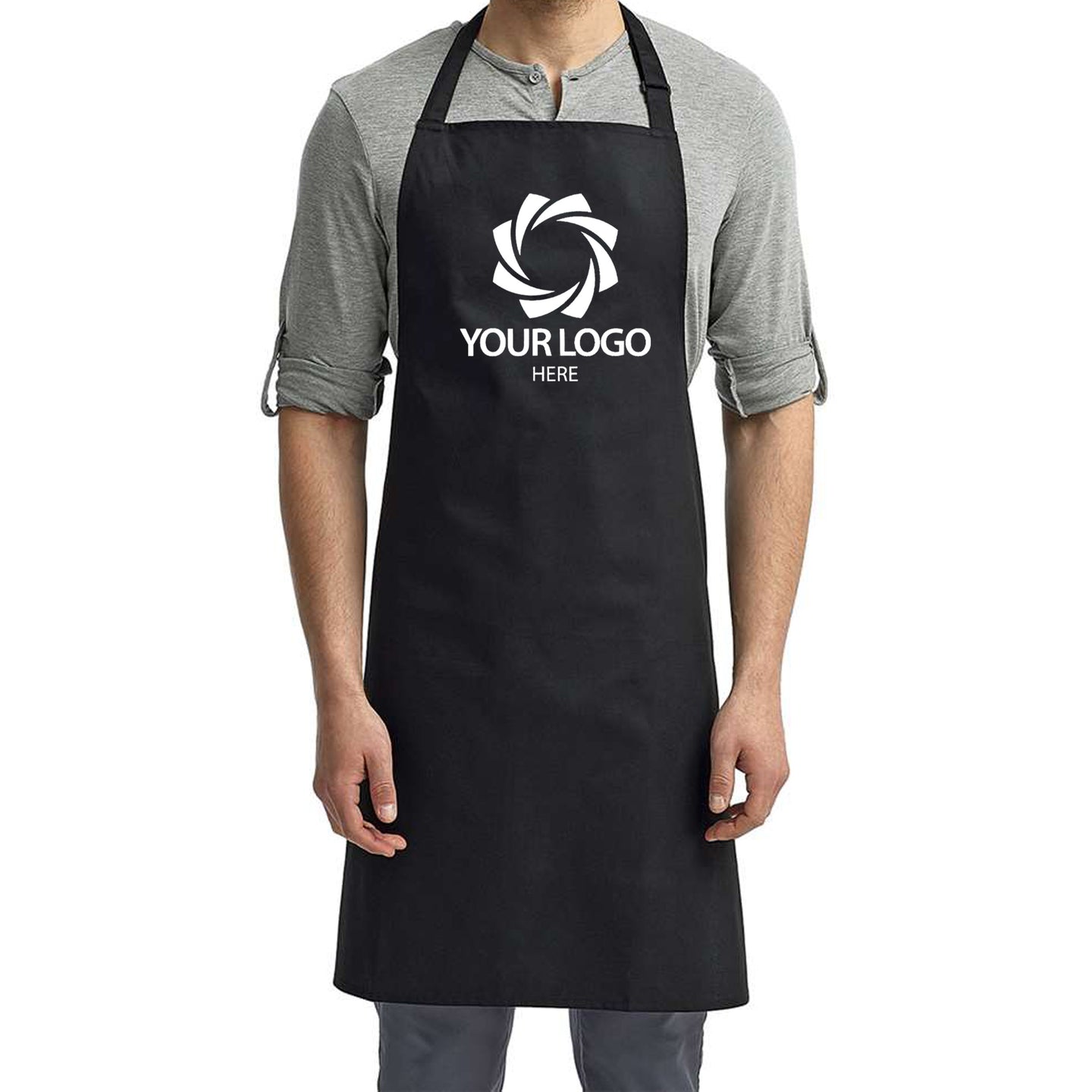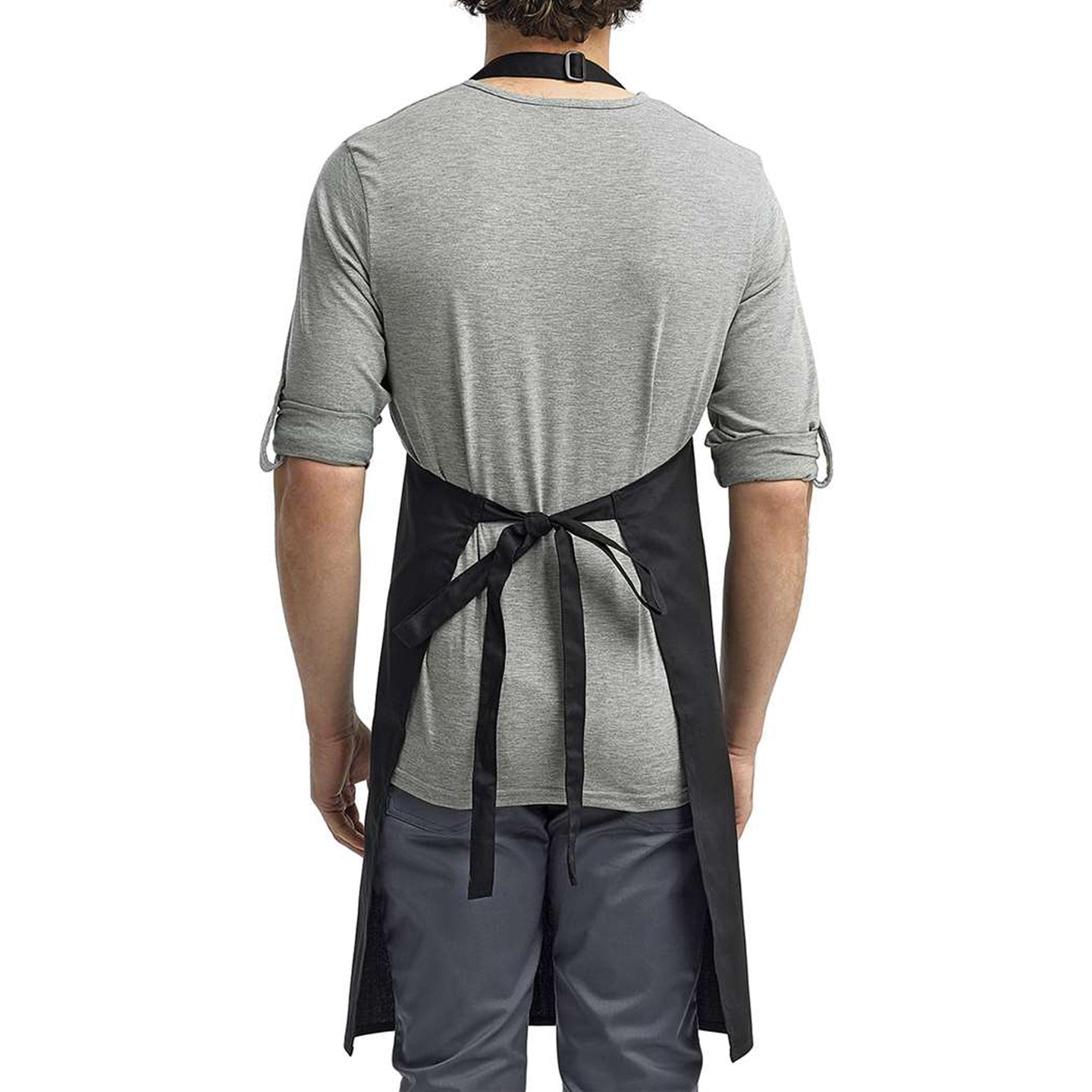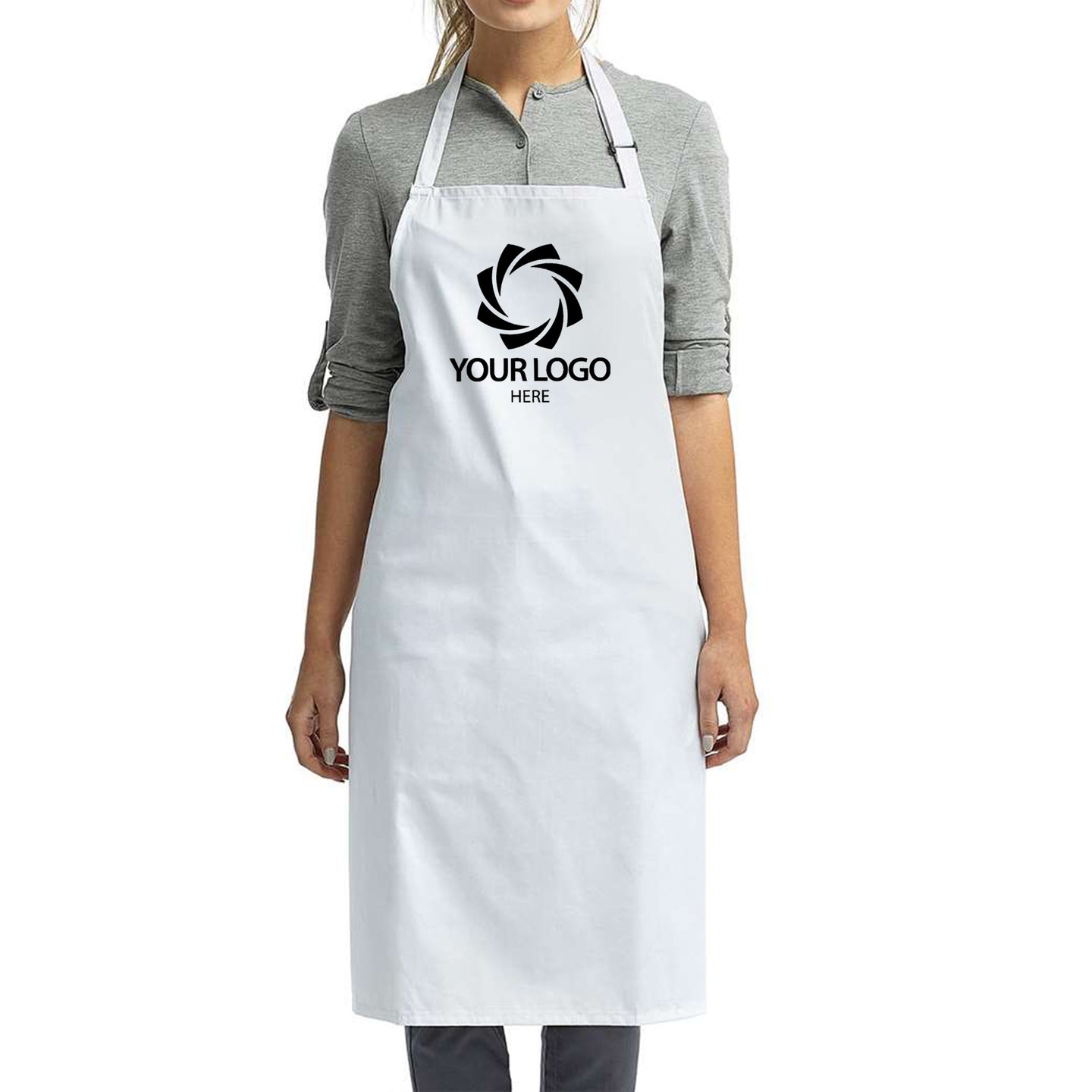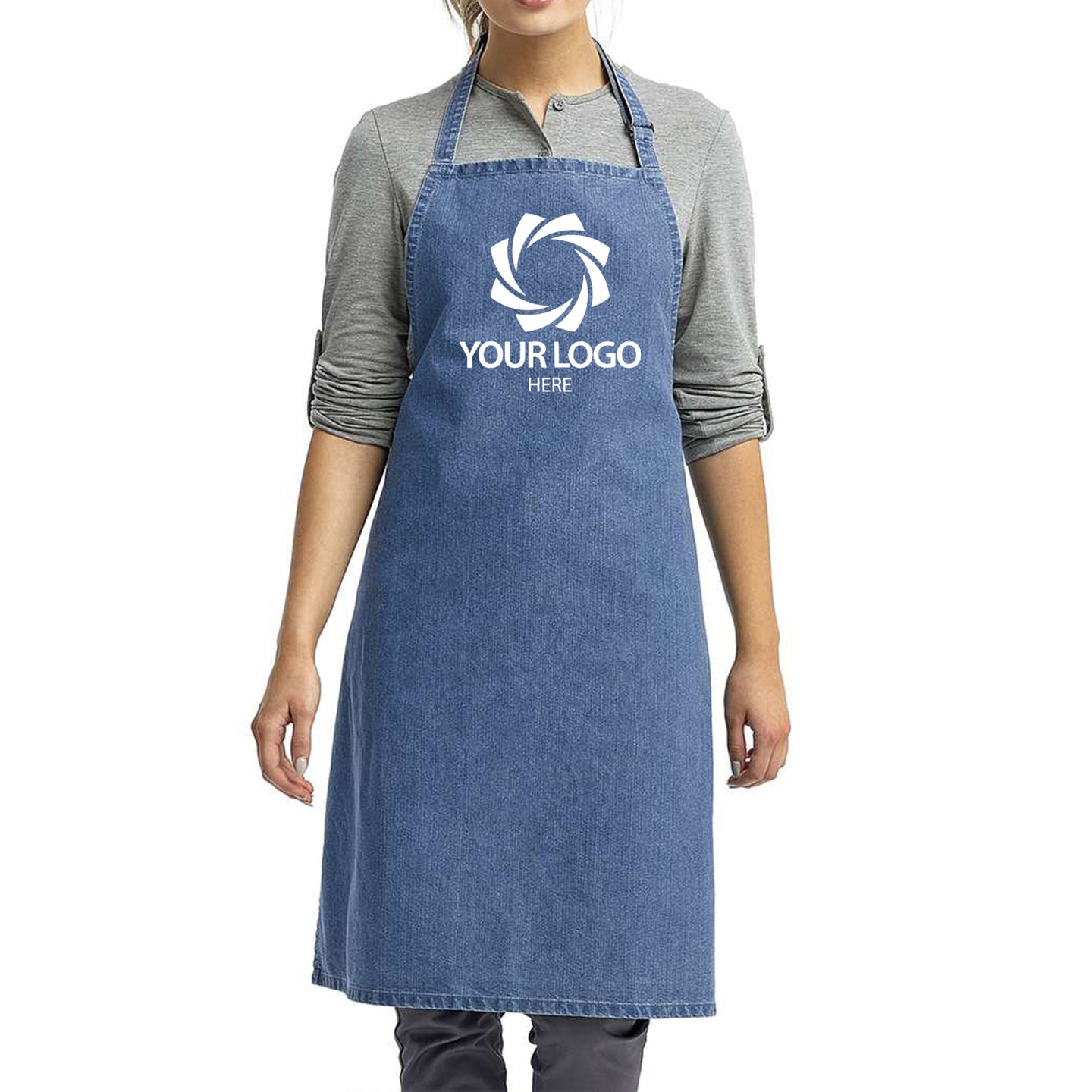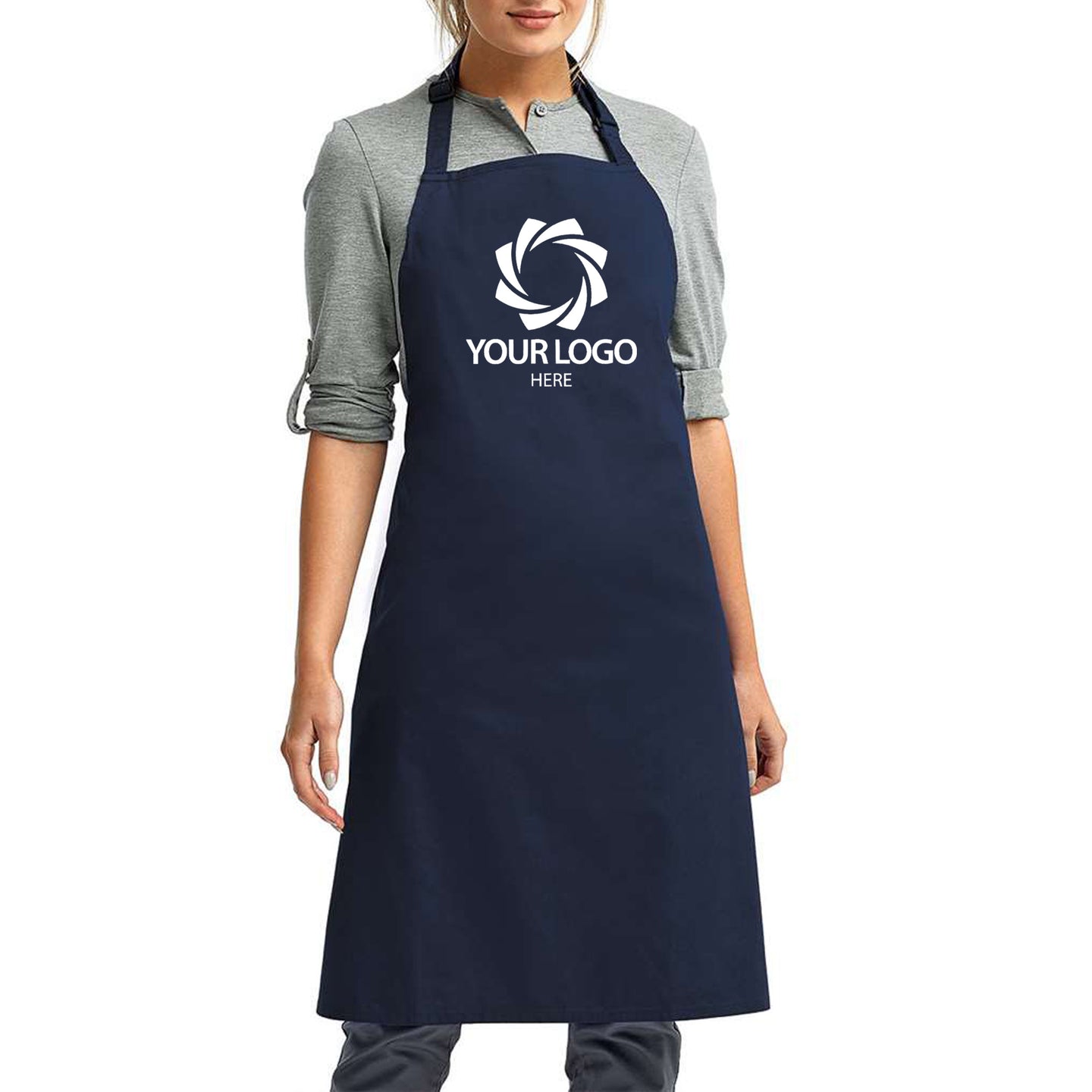Filters
-
Embroidery Custom Logo Kitchen Apron, Personalized Embroidery Apron, Embroidery Kitchen Apron
Sale price $25.00 Regular price$50.00 -
Custom Name Kitchen Apron, Personalized Apron, Gift for Chef
Sale price $20.00 Regular price$40.00 -
-
Custom Aprons
One of the best ways to reflect professionalism and corporate identity is to use custom apron designs. They can be used in many areas such as restaurants, cafes, hair and beauty salons, the healthcare sector, crafts and workshops, and retail stores.
What Materials Are Custom Aprons Made From?
They are manufactured from different materials depending on their intended use. The most commonly used materials in the production of custom aprons are listed below.
Cotton is used in the manufacture of many garments. It has natural and breathable properties. It is absorbent and also hypoallergenic. It is skin-friendly and allows the skin to breathe. It is used in the manufacture of chef aprons, waiter aprons, hairdresser aprons, and garments worn by those working in handicraft workshops.
Polyester is a type of synthetic fiber. It is lighter and more durable than cotton. It dries quickly. It retains color vibrancy and is stain resistant. It is used in the manufacture of clothing such as industrial wear, laboratory wear, cleaning staff uniforms, and promotional aprons.
One of the materials used in the production of custom-designed aprons is a cotton and polyester blend. It is obtained by mixing 65% cotton and 35% polyester. Combining the superior properties of both materials results in a new material. Clothing that can be used in almost all sectors is manufactured with this material, which is breathable like cotton and durable like polyester.
The denim-style fabric used in the production of custom-printed aprons is strong and durable. It is long-lasting and provides a stylish appearance. It is used in the production of clothing for boutique cafes, bars, art studios, and fashionable restaurant staff.
What Are the Current Apron Models?
The bistro apron is a type of special kitchen apron featuring a short waist detail. It is the most basic and common model. It ties at the waist and extends to the knees. Shorter models are also available. It is practical and easy to put on and take off. It has one or two pockets on the front.
The long apron is also known as a chef's apron. It extends almost to the ankles. It is made of thick and durable fabric. It is the most common type of specially designed apron for chefs. It is used by cooks and chefs in professional kitchens. The cross-strap apron can be considered under the category of custom men's aprons. It features a strap detail that can be tied diagonally across the back. It has a feature that reduces the risk of shoulder and back pain. It is used in areas such as boutique cafes, bars, cocktail bars, elegant restaurants, and craft fairs.
An example of personalized aprons is the neck strap apron. It is a classic model that completely covers the front. It provides maximum protection. It has many pockets, so many tools can be placed in them. It can be used by carpenters, blacksmiths, artists, craftsmen, and repair shop workers. Only aprons that cover the waist and front can be considered custom embroidered aprons. They do not restrict movement. They feature large pockets and towel loops. They are preferred by people working at a fast pace, bartenders, and fast food workers.
The apron uniform resembles a full dress. It is like a buttoned or one-piece uniform. It ensures a professional and clean appearance. It has plenty of pockets. It is frequently used by hotel cleaning staff, pharmacy technicians, laboratory workers, and hairdressers.
What is the Minimum Order Quantity (MOQ) for Custom Aprons?
The Minimum Order Quantity can be specified for custom aprons. Generally, order ranges can vary between 50 and 100 pieces. The table below explains the factors that determine the minimum order quantity.
What is the Delivery Time for Custom Apron Orders?
Custom chef aprons, among other custom orders, have a specific delivery timeframe. Average delivery times can vary between 7-21 business days. Delivery times may be shorter or longer depending on the following factors:
- Thanks to methods such as digital printing, delivery times can be reduced to 5-10 days.
- If processes such as embroidery are involved, delivery times can extend up to 10-21 business days.
- Delivery times may be extended due to complex designs.
- If the requested custom aprons are available in stock, delivery times may be shortened.
- If logoed custom aprons are involved, the delivery time may be extended or shortened depending on the fabric and color supply process.
- The size of the order quantity affects the delivery time.
- The design and approval process are also factors that affect the delivery time.
- Shipping and logistics can also extend or shorten the delivery time.
Can Customers Provide Their Own Aprons for Customization?
Custom aprons can be designed using materials provided by the customer. This process is called customer-supplied product. The customer provides the supplier with aprons on which they want a logo, name, or design applied. The supplier applies the customer's desired logo or other designs to these aprons. Once the printing process is complete, the aprons are delivered to the customer.
This process enables significant cost savings. The customer only pays for printing and embroidery fees. Since compatibility is ensured, the customer receives exactly the product they want. This applies to small orders. The supplier's order delivery time is reduced.
How to Apply Custom Designs to Aprons?
Embroidery, digital printing, appliqué, and drying are printing techniques applied to custom-designed aprons. In the design of custom aprons, embroidery is known as the most common and professional method. This process offers numerous advantages. Products made using this method are wash-resistant, provide a raised and tactile feel, and retain vibrant colors for a long time. Applications include logos, employee names, job titles, company names, and small to medium-sized icons.
Digital printing is a flexible and colorful method. It involves printing onto fabric using a large-scale printer. This process requires transfer paper. The desired pattern is transferred onto the fabric using heat and pressure. This method allows for unlimited colors and detail. It is ideal for complex gradient colors. There is a low minimum order quantity. Even a single apron can be ordered. Since the machine is large, completely unique designs can be applied to large areas. Photos, characters, large and colorful graphics, gradient and shadow designs can be easily processed.
Appliqué, or the burning method, is the process of sewing a figure cut from a different fabric onto the apron. It is ideal for large logos with many colors. Another printing method used in custom apron designs is the drying method. It is generally suitable for large orders. It requires a separate mold for each color. It is a technique that increases the cost in multi-color designs.
What Care Instructions Should Customers Follow for Custom Aprons?
To ensure your designs last longer, it is helpful to follow certain instructions. Before washing your products, please refer to the care instructions on the label. Custom aprons should always be washed inside out. The water temperature should not exceed 30 degrees. Do not use bleach or detergents containing chemicals. Try to wash with natural cleaners. If you are washing in the machine, select a delicate and gentle cycle. The most reliable method is hand washing. If possible, wash these types of products by hand.
Never use a dryer. Dry at room temperature or in the sun. When ironing your products, do not iron directly over embroidery or prints. Iron products made of cotton and polyester fabrics on a low setting. Turn your product inside out before ironing. Placing a damp cloth over the product while ironing may be helpful. This will prevent the colors and embroidery on the product from fading.
What Are the Prices of Custom Aprons?
There are many factors that affect pricing. Custom aprons are priced based on factors such as personalization of the design, order quantity, apron model and quality, design complexity, accessories and extras, supplier, and location.
For prices on custom aprons, please visit Custom Print House
Can Aprons be Customized for Different Professions?
On our website, you can find products that can be customized for different professions. For restaurant and cafe workers, cotton and polyester blend fabrics are preferable. Cross-over and strapless models are ideal for those working in these environments. Polyester fabric is ideal for hairdressers and beauty specialists. This fabric is durable and water-resistant. Dark-colored fabrics can hide stains that may occur during work. Bright and eye-catching salon logos and colorful patterns can be easily applied to this type of fabric. Details such as scissor pockets, brush pockets, and flap pockets allow employees to easily access various materials.
For healthcare workers, open fabrics that are easy to sterilize, durable, and mostly white in color may be preferred. Custom aprons that are one-piece and not disposable are ideal for these professions. Details such as embroidery, the institution's logo, the employee's name, and area of expertise can be incorporated into the apron. Designs with multiple pockets are ideal.
Aprons made of durable canvas fabric are useful for artisans and craftsmen. A design with a neck strap and plenty of pockets will provide convenience for workers. Details such as the company logo or the worker's name can be added to the apron. Details such as tool pockets, hammer holsters, and measuring tape pockets will make the workers' jobs easier.
For retail and store employees, it is necessary to choose fabrics that fully cover the front and are stain-resistant. Details such as the store logo and employee names can be added to the apron. Models with pockets for small tools and back-tie closures for access to the cash drawer may be ideal for employees.
Do You Offer Bulk Pricing or Discounts for Bulk Orders of Custom Aprons?
Yes! You can visit our website for special campaigns and offers for our customers. For more detailed information, you can reach us through our communication channels.

